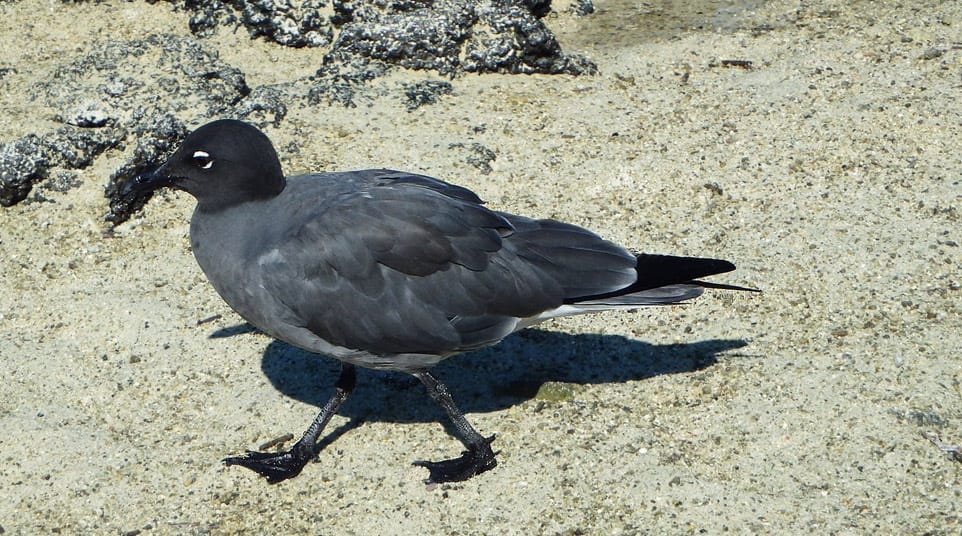- Home >
- Travel Guide >
- Galapagos Islands >
- Animals & Wildlife >
- Lava Gull
Galapagos Lava Gull Facts
Name: Lava Gull
Family: Laridae
Scientific name: Larus fuliginosus
Length: 51 - 55 cm (20 - 21.8 in)
Weight: 380 g (13 oz)
Wingspan: 130 cm (51 in)
Conservation Status: Vulnerable
Category: Sea Birds
Number of Species: 47
Endemic Species: 13
In total, 47 species of sea birds have been recorded in the Galapagos, 19 of which are resident to the Islands. The sea birds therefore account for nearly one third of all the species ever recorded in the islands and about the same proportion of the resident species.
Seabirds can be conveniently divided into 12 groups, as show in the table below. This shows the number of species recorded in each group and summarizes their status. If also shows the number of endemic species and the number of other species which are represented by endemic subspecies. Species are treated as migrants if they occur annually, vagrants being those recorded less frequently.
Category: Sea Birds
Endemic subspecies: Swallow-tailed Gull; Lava Gull
Five species of Gulls have been recorded in Galapagos, which include 2 residents, 2 migrants and 1 vagrant. Gulls are medium-sized to largish seabirds with long, pointed wings and longish, rather stout, hook-tipped bills, usually with a marked gonydeal angle. Their legs are longish and their feet webbed. The gulls recorded in Galápagos are predominantly grey and white in adult plumage, although the Lava Gull is wholly grey. The sexes are alike. Birds take a number of years to attain adult plumage and immature plumages are variable, often making identification difficult. Gulls feed by picking food from the surface of the water or by scavenging, often along the shoreline.
Widely distributed resident of Galapagos. The total world population occurs on the Galapagos Islands only and is fewer than 400 pairs. Breeds throughout the year, but mainly from May to October, nesting singly in the shore zone.
Identification:
Unmistakable; the only all-dark gull, with heavy bill. ADULT: Blackish head with white eyelids, sooty-grey upper parts and breast, paler on belly. In flight, darker primaries contrast with rest of wing; rump and outer rail feathers whitish. JUVENILE: Dark chocolate-brown overall, except for pale rump. FIRST-WINTER / FlRST-SUMMER: Similar to juvenile, but has greyer tints to head and upper parts.
Behavior:
A tideline scavenger, rarely alighting on the sea.

